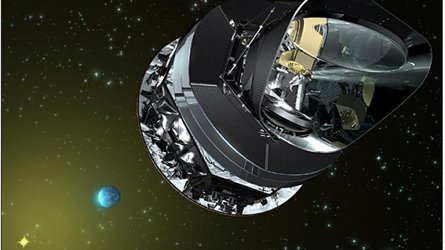The cosmic microwave background and the distribution of matter in the Universe
How is matter distributed in the Universe?
Has the Universe always had such a rich variety of structure?
How did the Universe evolve from very smooth to highly structured?
How can we study the evolution of cosmic structure?
How is matter distributed in the Universe?
A glance through our cosmic neck of the woods reveals that matter in the Universe is distributed in a highly structured fashion. Large concentrations of matter, such as stars and planets, are interspersed with large areas of empty space. The trend continues on larger scales: stars build up galaxies, which are separated from one another by vast and deserted intergalactic spaces. On even larger scales, galaxies assemble in galaxy clusters, the most massive structures in the Universe to be held together by gravity. Galaxy clusters are located in the densest knots of the cosmic web, the wispy network of large-scale structure consisting of dense filaments of matter and gigantic cosmic voids that pervade the Universe.
Has the Universe always had such a rich variety of structure?
No, the highly diverse distribution of cosmic matter that we see in the Universe at present – stars, galaxies, galaxy clusters – has not always been in place. The density of matter in the early Universe (at the time of recombination) was pretty much the same everywhere, with only very small changes from place to place, typically of order one part in 100,000.
How did the Universe evolve from very smooth to highly structured?
After inflation, the density of matter was almost uniform, punctuated only by tiny fluctuations. As time went by, these fluctuations grew denser and more massive under the pull of gravity, and eventually gave rise to stars, galaxies and the rich variety of cosmic structure that we observe today. The evolution of the matter distribution from almost homogeneous to highly sub-structured entails an enormous amount of information about the Universe's history and the nature of its fundamental constituents.
How can we study the evolution of cosmic structure?
In order to understand how cosmic structure formed and evolved, cosmologists try to gather as many 'snapshots' as possible depicting how the distribution of matter has changed throughout the history of the Universe. At the present cosmic epoch, this is achieved by surveying the galaxies that populate the local Universe, whereas observations of increasingly distant galaxies fill in the gaps corresponding to earlier and earlier cosmic times. The cosmic microwave background is the earliest snapshot we can gather in this series.




